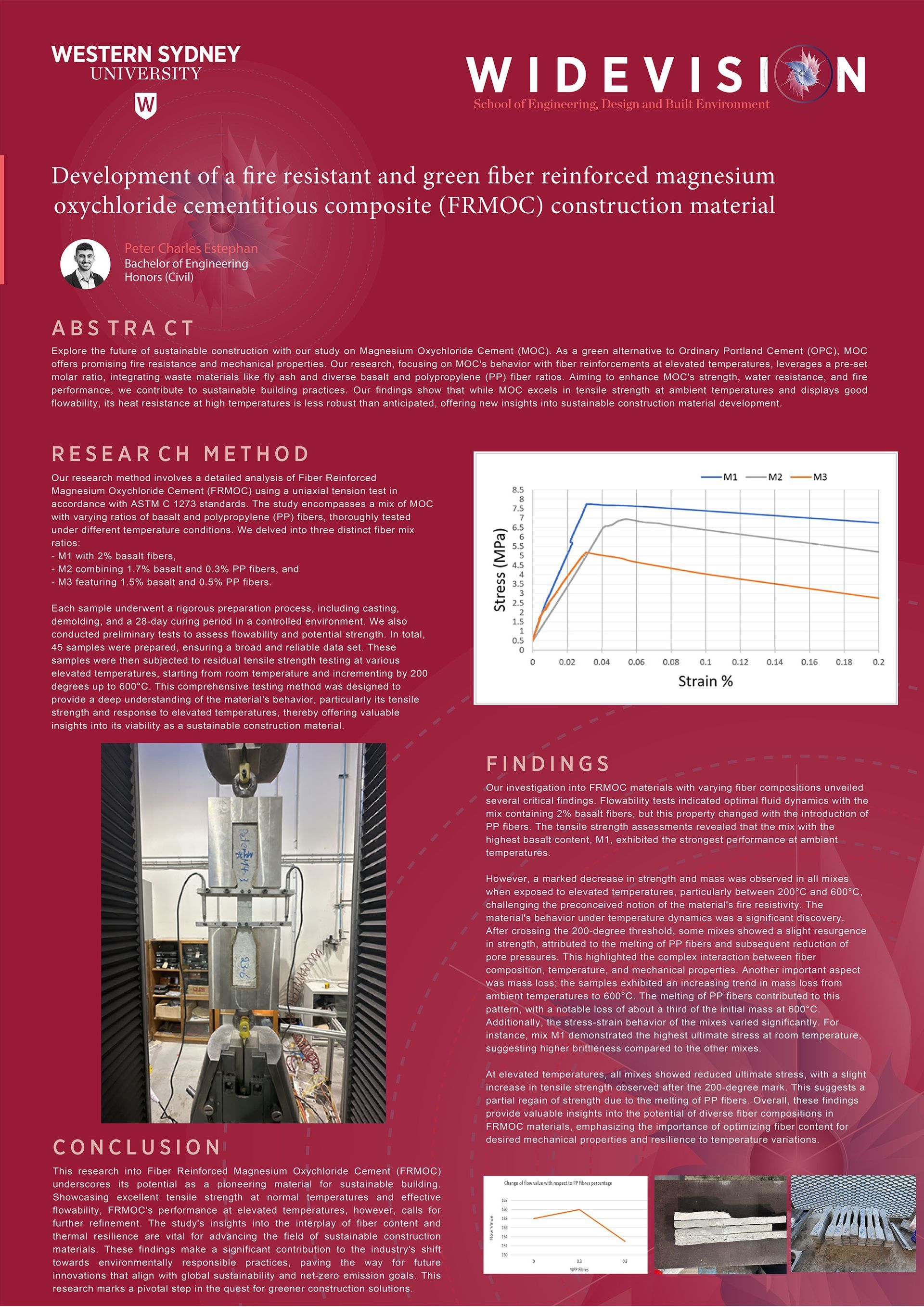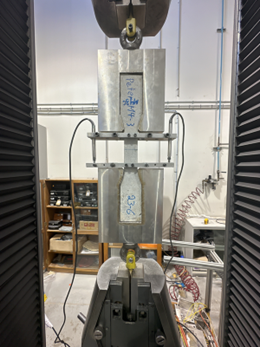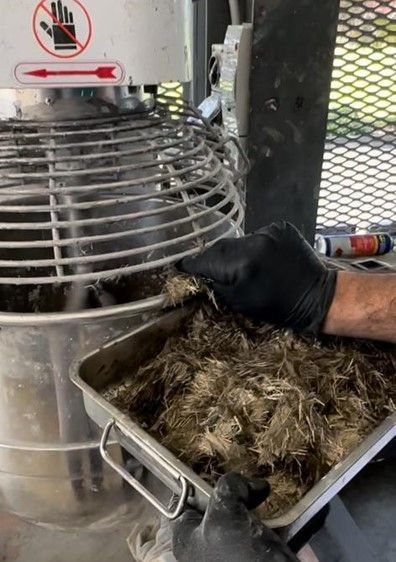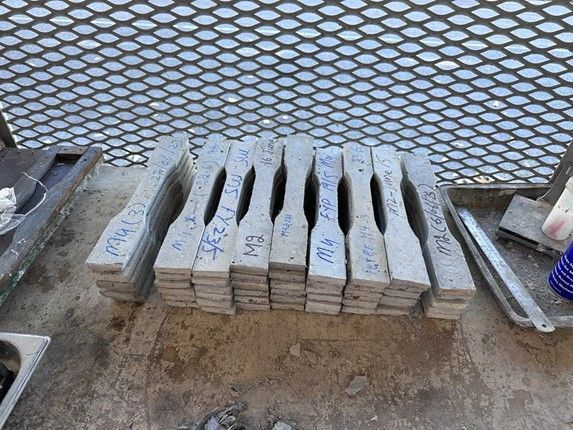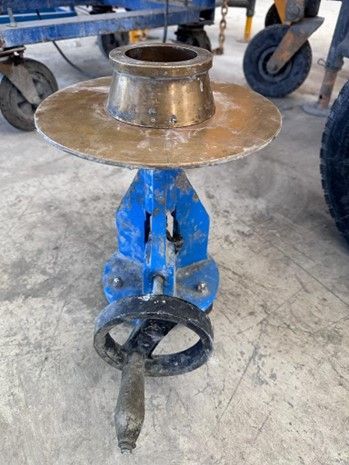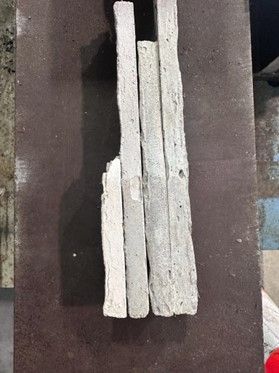Peter Charles Estephan
Bachelor of Engineering, Honours
From pouring concrete to deciphering steel plans, my interest/eagerness for the fineness of the building blossomed. Intrigued by the engineering nuances of shaping structures, I delved into the art of design and planning. Megastructures, with their colossal engineering challenges, captivated my interest. For my postgraduate plans, my trajectory involves honing engineering and design skills, driven by an enthusiasm to contribute meaningfully to the creation of monumental Mega Structures. My journey unfolds as a testament to my love for innovation and the transformative power of the construction industry.
Development of a fire resistant and green fiber reinforced magnesium oxychloride cementitious composite (FRMOC) construction material
Imagine a future where our buildings and infrastructure are not just structurally sound, but also environmentally sustainable. This is the vision behind my engineering project, which focuses on developing a revolutionary building material: Fiber Reinforced Magnesium Oxychloride Cement (FRMOC).
This project isn't just an academic exercise; it's a steppingstone towards real-world applications in sustainable construction. FRMOC is a greener alternative to Ordinary Portland Cement (OPC), the production of which is one of the largest contributors to CO2 emissions globally.
By using a blend of Magnesium Oxychloride Cement with basalt and polypropylene fibers, my project explores the creation of a material that is not only fire-resistant but also exhibits superior mechanical properties compared to traditional cement. The research dives deep into the behaviour of this composite when exposed to various temperatures, especially focusing on its tensile strength and durability under extreme conditions.
Our testing method, aligning with ASTM C 1273 standards, involved a meticulous process of preparation, curing, and assessment of 45 different samples. In the FRMOC study, the mix with 2% basalt fibers exhibited the highest tensile strength at 7.74 MPa under ambient conditions. Additionally, the introduction of PP fibers in the mix resulted in an increase in strain, indicating improved ductility and adaptation to varied structural requirements.
My goal is to see FRMOC evolve from a research project into a widely used construction material. This innovation could significantly contribute to reducing the carbon footprint of the building industry, aligning with global sustainability goals. Join me in reimagining the future of construction, where strength meets sustainability.


